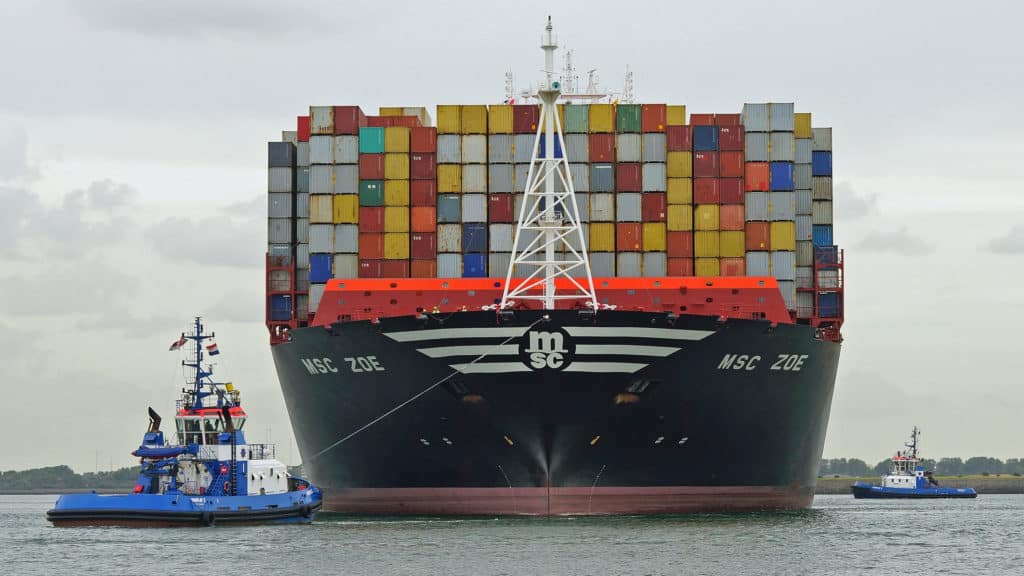Naval architects and marine experts have told FreightWaves that the most likely cause of the container losses suffered by the MSC Zoe earlier this month were a failure in the lashing process.
According to one source, the accelerations and rolling motions of a vessel in a storm mean that the most vulnerable areas of the ship, in terms of cargo container losses, are at the front and rear of the vessel.
Photographs taken at the time of the accident showed that most of the 280 or so containers lost from the MSC Zoe were from the central cargo holds of the vessel, and that, said both sources, indicates that the lashings were insufficient to hold the cargo in the storm.
Asked by FreightWaves if there had been further updates on the causes of the accident, an MSC spokeswoman said, “The exact causes of this incident are still being analysed.”
Meanwhile, MSC issued a further statement on the discharge of cargo that has taken place in Bremerhaven: only one container bound for Bremerhaven was damaged; all cargo heading to destinations beyond Bremerhaven, but through the port, have been unloaded; cargo loaded in Sines, Portugal, bound for Tanjung Pelepas, in Malaysia was unloaded in Bremerhaven and will be loaded onto a connecting vessel.
The search for missing cargo and local clean-up operations are continuing. All cargo owners have been contacted, said the vessel operator.











